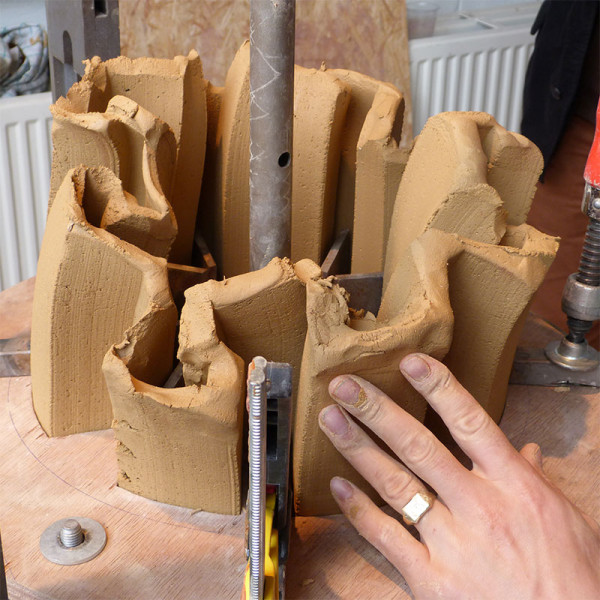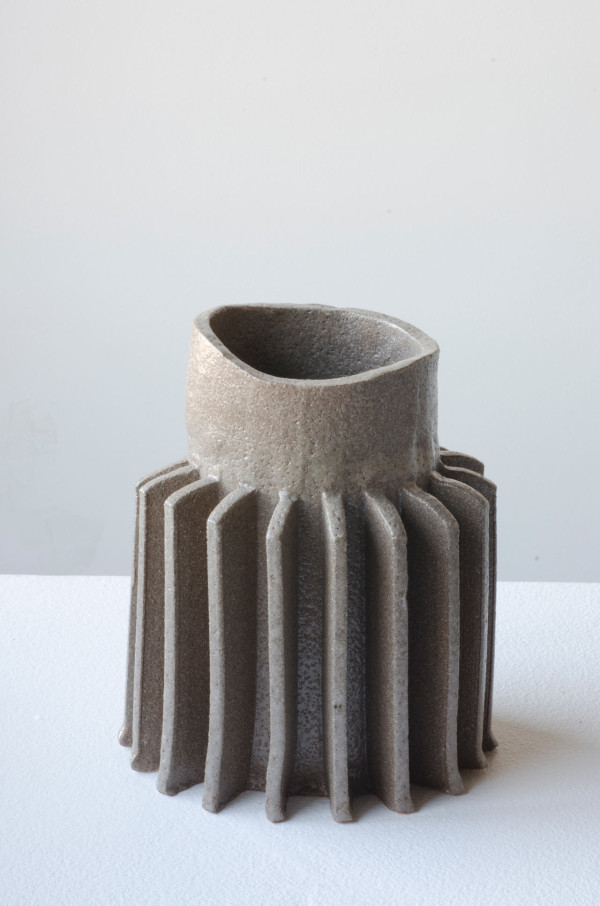I went to Sectie-C to meet Floris Wubben where he had opened his studio up to the public alongside 79 other designers for Dutch Design Week.
Floris very kindly gave me a demonstration of how his Crown Vase is made. Launched for Design Week, it’s so new that the first ones were still warm when he put them on the plinth!
The first step is to shape the clay so it fits into the machine – on this occassion Floris is using about 25kg of clay.
He lifts the base up so he can put the clay on the pressing device and then lower it into the machine slowly.
Once he’s lowered the clay into the machine, he adds the wooden profile that will dictate the shape of the outside of the vase. The machine can press seven tons, so it’s important the profiles are well constructed, otherwise they can break.
Floris then lowers the profile that forms the inside shape over the top of the clay into the space within the first profile. Between the two profiles is a gap through which the clay will be forced to form the vase.
He pumps the press by hand, forcing the clay up through the profiles bit by bit. He says: “Because the human touch is involved in this process, because I pump the press by hand, each vase is a unique piece. But it’s still made with machinery.”
“My assistant always says: ‘Keep your hands off the vase’, but I can’t help it. I always want to be part of the process a little bit,” he says.
“The profile is slightly wider on one side, so there is less pressure on that side. This creates a slightly bent shape. There are so many different influences on the creative process of the vase and I love that – I don’t want to know everything, because some things are just the mysteries of the machine.”
“We have to remove the profile that shapes the inside of the vase and then continue the pressing a little bit otherwise the vase would not have a bottom!”
“I wanted to create a machine, but there are big machine parks that make furniture on their own, and then the emotion of the craftsmanship disappears, so I wanted to find a machine that combines the human touch in the end product, where the machine and the humans are working in harmony,” says Floris. “I saw something a child playing with a Play-Doh machine and it was a light bulb moment. It’s such a simple technique.”
“I have a lot of colleagues and friends who help me to create these objects. It’s called Studio Floris Wubben, but it’s more than just Floris Wubben. It’s a whole team that works very hard to make this happen and I’m pretty proud of the result.”
Check out some of the results from this collection:
Our trip to Eindhoven was supported by Airbnb.com.






































